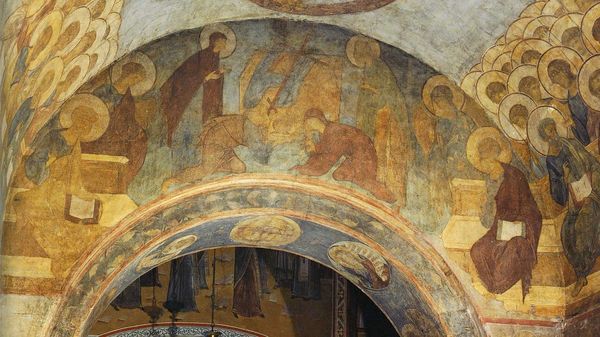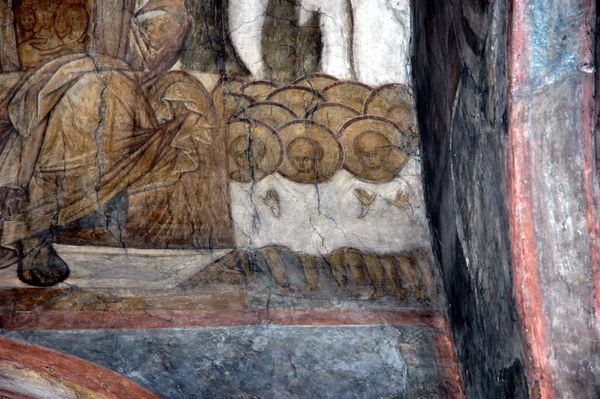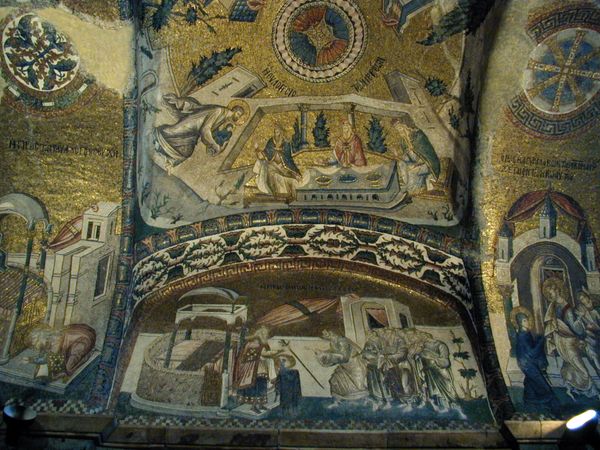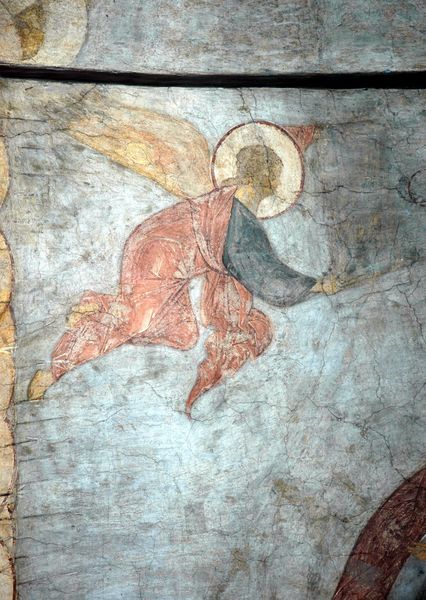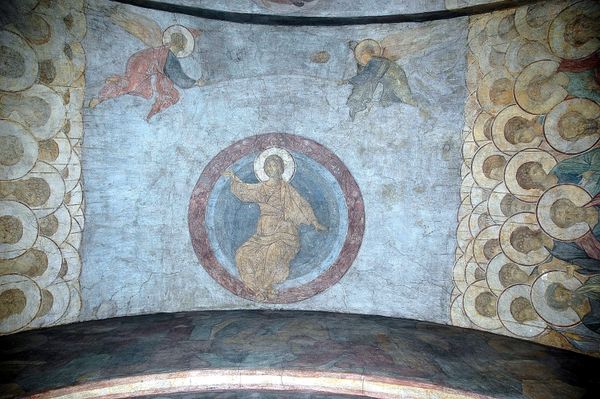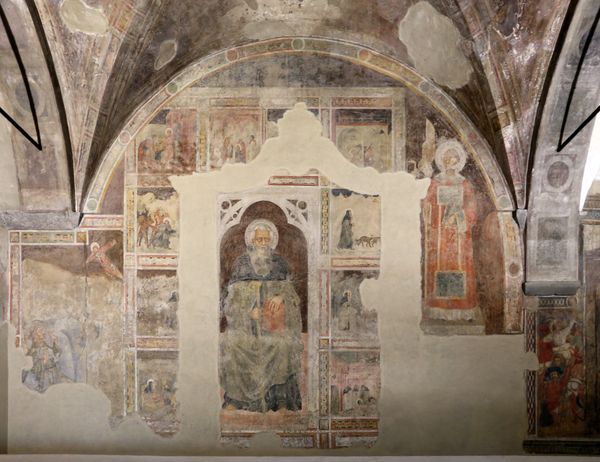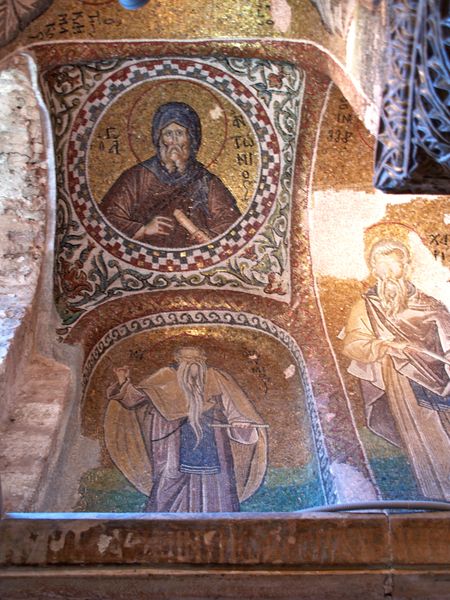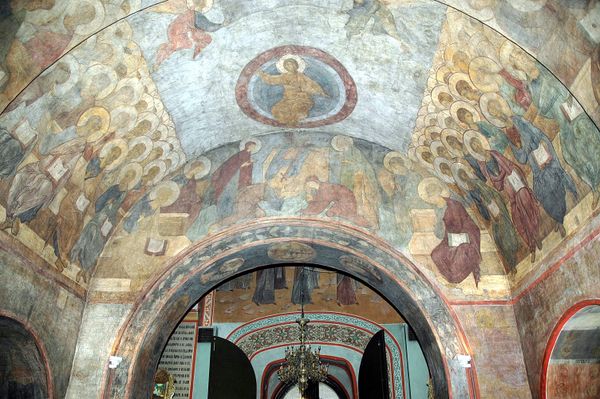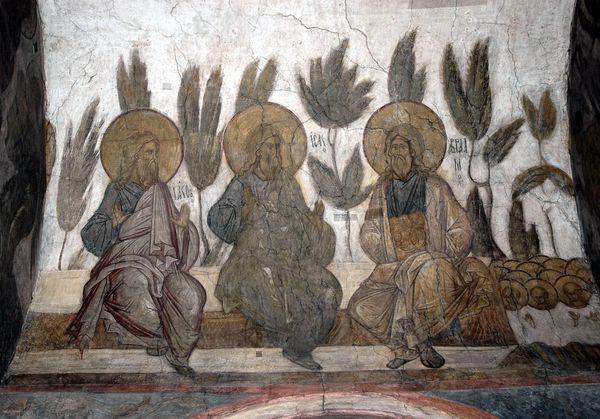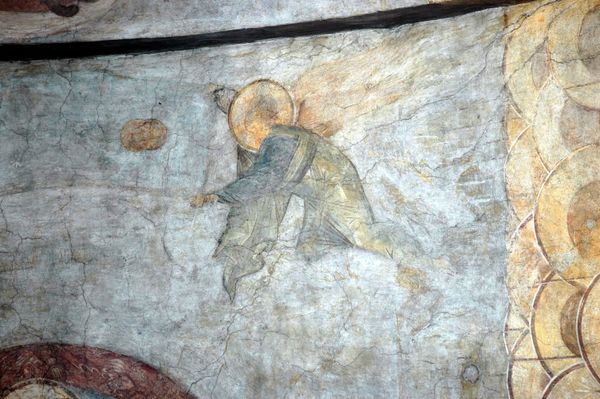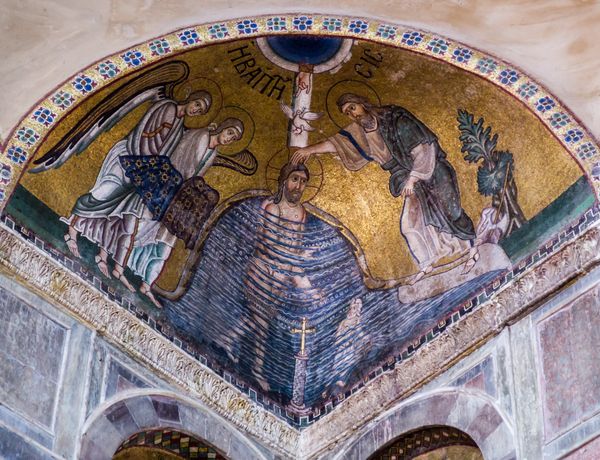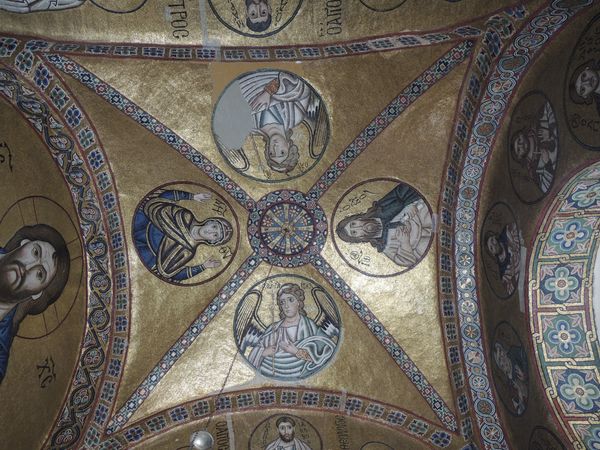
The Last Judgement: Mother of God with angels 1408
0:00
0:00
andreirublev
Assumption Cathedral, Vladimir, Russia
tempera, painting, fresco, architecture
#
portrait
#
byzantine-art
#
medieval
#
tempera
#
painting
#
holy-places
#
figuration
#
historic architecture
#
fresco
#
christianity
#
islamic-art
#
history-painting
#
virgin-mary
#
architecture
#
angel
Copyright: Public domain
Editor: Here we have Andrei Rublev's fresco, "The Last Judgement: Mother of God with angels," created in 1408 in Russia’s Assumption Cathedral. The somber colors create a solemn mood. What strikes me most is the placement, high in a cathedral arch. What do you see in this piece, Professor? Curator: It's essential to understand this fresco not just as an artwork, but as a powerful statement embedded within a specific historical and spiritual context. Given its location in a cathedral, how does the image reinforce power structures within the Orthodox Church at that time? Editor: I hadn’t thought of it that way. So it’s not just about religious devotion, but also about social hierarchy? Curator: Exactly. Notice the placement of the Virgin Mary, her central role. Consider how she might represent both divine compassion, but also the importance of female figures within the religious framework of the time. How might that intersect with secular ideas about women? Editor: So it's a commentary on the ideal of feminine virtue and its role in salvation, but also on societal expectations? It also seems, in its location, like a powerful form of public pedagogy about faith, heaven, and hell, reaching beyond those literate enough to study scriptures. Curator: Precisely. And consider Rublev's use of Byzantine artistic conventions within the work. In what way do the conventions either subvert or confirm accepted dogmas and power? Editor: I guess it invites more questions than answers! It is challenging to see beyond the aesthetic qualities to the sociopolitical. Curator: It is indeed. Analyzing art is to actively confront power and societal values as preserved in pigment and form. Keep asking those questions!
Comments
No comments
Be the first to comment and join the conversation on the ultimate creative platform.
